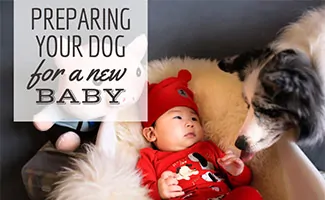The Pet Emergency Kit Every Owner Needs Before It’s Too Late
When you purchase through links on our site, we may earn a commission. Here’s how it works.
Flood, fire, blackout—when chaos hits, you don’t have time to shop for pet supplies. This no-fluff guide shows you exactly what to pack now so you’re ready to grab, go, and keep your pet safe when the clock is ticking.
Table of Contents
Your Pet’s 30-Second Disaster Plan
If you had to leave right now, these are the things you would want in your hand or already packed by the door. No overthinking and no extra runs to the store.
Grab-and-Go Essentials (pack in a waterproof tote or backpack):
- Food for 3 to 7 days with a travel can opener if using cans
- Medications and vet records stored in a waterproof bag
- Water with at least 1 gallon per pet for 5 days, plus a collapsible bowl or water bottle
- Leash, harness, and carrier sturdy enough for stressful situations
- ID and microchip information or a GPS collar for instant location tracking
- Recent pet photo in case you need to make a lost-pet flyer
- Waste bags or litter box and scoop because disasters do not stop bathroom breaks
Quick tip: Store a printed copy of your vet’s contact information and feeding instructions in the kit. In an emergency, someone else might have to care for your pet.
Surprising Must-Haves Most Owners Forget
Once the basics are covered, these extras can make a big difference in keeping your pet safe and comfortable.
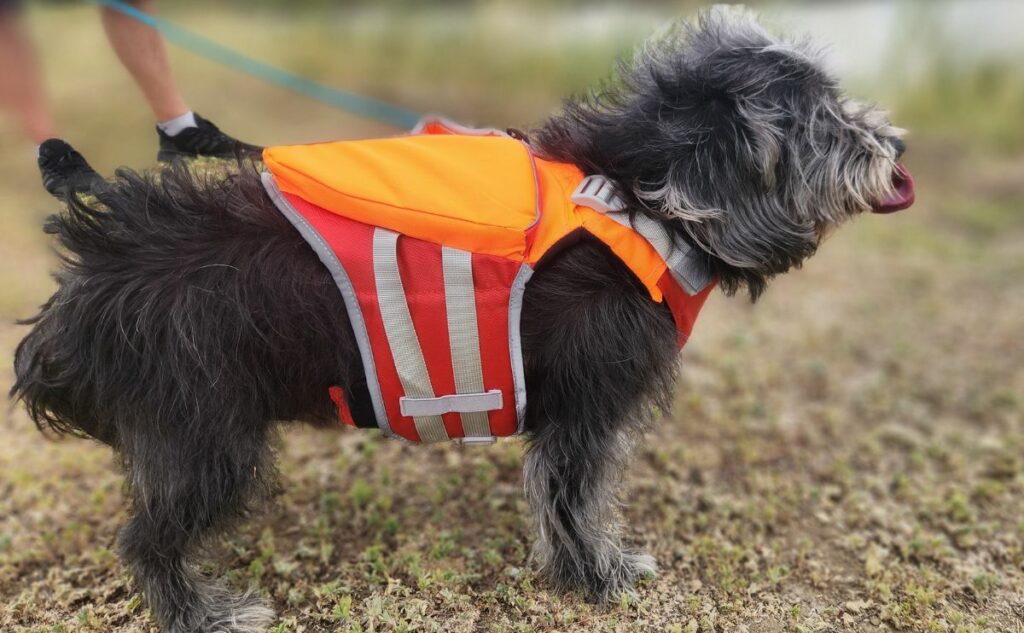
Some are lifesavers in specific disasters, and others make an emergency less stressful for both of you.
- Grooming gear, such as a brush, clippers, and shampoo, to handle muddy or matted fur
- Blankets or towels for warmth and to dry off after rain or flooding
- Dog life jacket for evacuations involving boats or flooded streets
- Flashlight with spare batteries to find your way during power outages
- Pillowcases for transporting small reptiles or rodents safely
- Pet-safe wipes and paper towels for quick cleanups
- Special species supplies if you have horses, chickens, rabbits, or other animals with unique needs
Quick tip: Consider your location and the disasters most likely to occur. A life jacket might be essential in a flood-prone area, while pet-safe wipes could be a bigger priority during wildfires or dust storms.
Disaster-Specific Pet Prep
Every disaster brings its own challenges, and your pet’s needs can change depending on the threat. Use these quick tips to tailor your emergency plan.
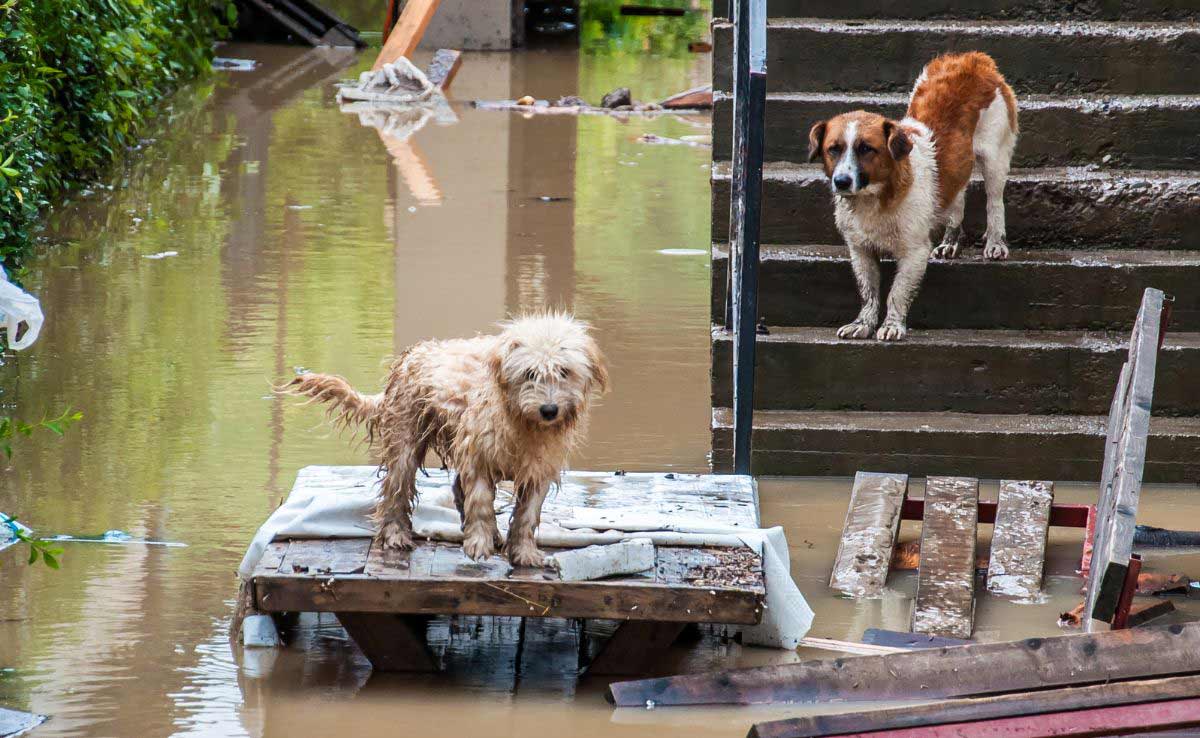
Hurricanes & Flooding
- Evacuate early if advised and bring pets with you
- Store food and supplies in waterproof containers
- Keep a pet life jacket ready for each animal
- Attach waterproof ID or GPS tracker to collars
- Identify multiple evacuation routes in case roads are blocked
Wildfires
- Keep pets indoors with windows closed to reduce smoke exposure until it is time to evacuate
- Keep carriers and leashes near the door for fast evacuation
- Have a pet-safe breathing mask or damp cloth to cover the nose and mouth, as well as goggles for eyes, if smoke levels are high
- Protect paws from hot ground with booties
- Evacuate as soon as wildfire warnings are issued
Blizzards
- Keep pets indoors for the duration of the storm to prevent frostbite and hypothermia
- Stock extra blankets and pet-safe heating pads
- A heated vet is another great way to keep your pup warm
- Provide an indoor bathroom option, such as a litter box or pee pads, to limit time outside
- Use paw wax or booties for quick bathroom trips outside
Tornadoes
- Move pets to a basement or small interior room without windows as soon as a tornado warning is issued
- Keep them leashed or crate to prevent escape if they panic
- For extra protection from debris and impact, purchase a heavy-duty crate, (e.g., Gunner G1 Kennel)
- Store a small first aid kit, fresh water, and comfort items in your safe space year-round
- Practice getting pets into the shelter quickly so they are not startled when it matters most
Extreme Heat
- Keep pets indoors in air-conditioned or well-ventilated areas during peak heat hours
- Provide constant access to fresh, cool water
- Freeze water bottles to place in carriers or crates
- Carry a portable, battery-operated fan for cooling
- Avoid hot pavement to prevent paw burns
Earthquakes
- Secure heavy objects in your home to prevent injury
- Keep pets in a safe room until aftershocks pass
- Leash or crate pets before opening doors to prevent escape
- Check fences and gates for damage before letting pets outside
- Train your pet to come when called, even when frightened
Other Natural Disasters
Quick tip: Even if one type of disaster is rare where you live, it is smart to prepare for at least two scenarios. Weather patterns and emergencies can be unpredictable.
Evacuation vs Shelter-In-Place Plans
Every emergency is different. Sometimes it is safer to stay home. Other times, you need to leave immediately.
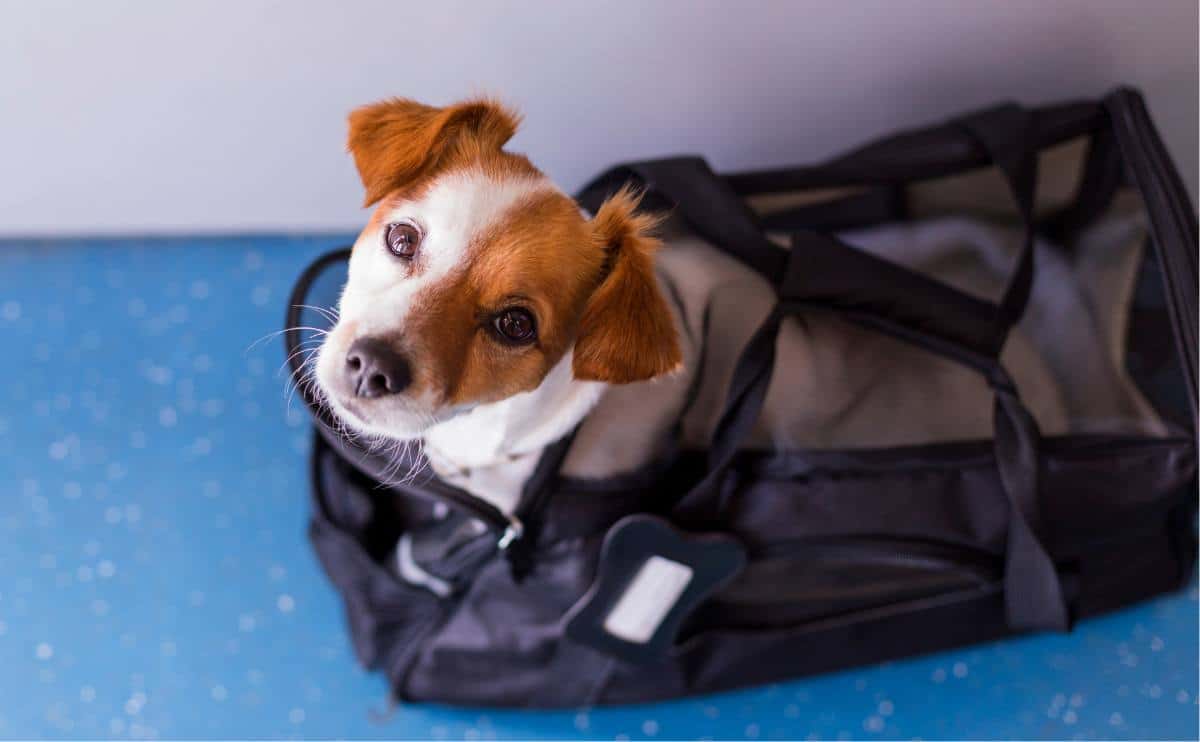
Knowing the difference and having a plan for both keeps your pet safer.
Evacuate if:
- Authorities order it
- Your home is in a flood, wildfire, or storm surge zone
- Staying could trap you without food, water, or medical care
Shelter-in-place if:
- It is safer indoors than outside (for example, during a chemical spill or blizzard)
- Roads are unsafe or blocked
Quick tip: Identify pet-friendly shelters and hotels ahead of time, and know multiple evacuation routes. If sheltering in place, pick an interior room with no windows and stock it with your pet’s essentials.
Storm-Proof Your Wallet
Vet bills from an accident or sudden illness can climb into the thousands, and emergencies rarely wait for payday. The best way to protect your pet and your budget is to plan ahead.
3 Fast Ways to Emergency-Proof Your Wallet
- Get pet insurance from a trusted provider before disaster strikes
- Set aside a small monthly savings for unexpected vet visits
- Keep a credit card or emergency fund dedicated to pet care only
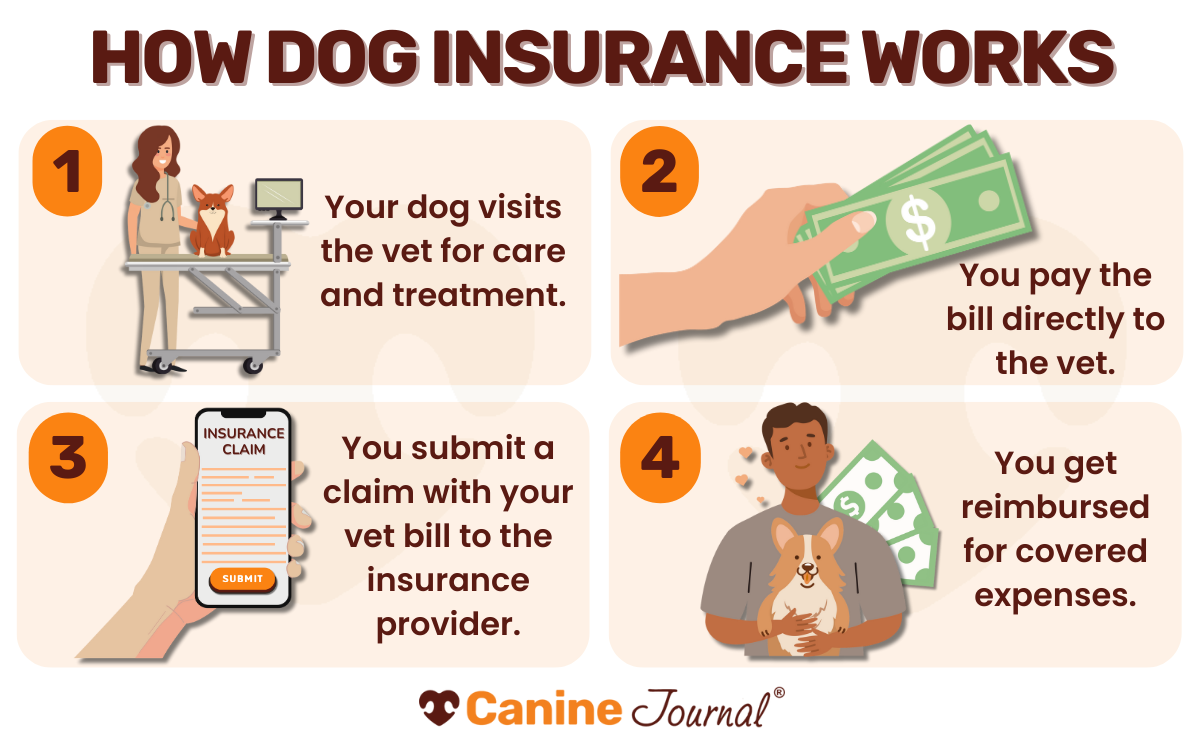
Quick tip: Read reviews before choosing a policy so you know it covers the situations you are most worried about.
Your Pet’s Panic Zone: How To Keep Them Calm
Disasters are stressful for pets, too.
Loud noises, strange smells, and sudden changes can make even the calmest animals panic. Staying close and creating a safe space can make all the difference.

- Stay together in an interior room away from windows if possible
- Block out chaos with familiar toys, a comfy bed, and plenty of treats
- Use calming aids like a snug-fitting anxiety vest, calming treats, or CBD oil
- Let rescuers know your pets are inside by placing a visible sign or sticker on your door
- Stick to a routine for feeding and bathroom breaks to give your pet a sense of normalcy
Quick tip: Your voice is one of the most reassuring things to your pet. Talk to them often and keep your tone calm, even if you are feeling nervous.
Pet Behavior & Training For Emergencies
A prepared pet is a calmer pet. A little training now can make evacuations faster and less stressful for everyone.
- Carrier training: Teach your pet to enter their carrier willingly, so loading up is quick.
- Noise desensitization: Play recordings of thunder, sirens, or fireworks at low volume and reward calm behavior.
- Emergency cues: Train commands like “come” or “go to bed” that work even when your pet is nervous.
- Socialization: Expose your pet to new environments so they adapt better if evacuated to a shelter or hotel.
Quick tip: Practice short “drills” a few times a year. Grab the kit, load your pet, and walk through your evacuation plan.
5 Lost Pet Recovery Steps
Even with the best planning, disasters can separate pets from their families. Having a recovery plan ready can save precious time.
1. Microchip Check
Make sure your pet’s microchip is registered and the contact information is current. You can update this online through the chip manufacturer.
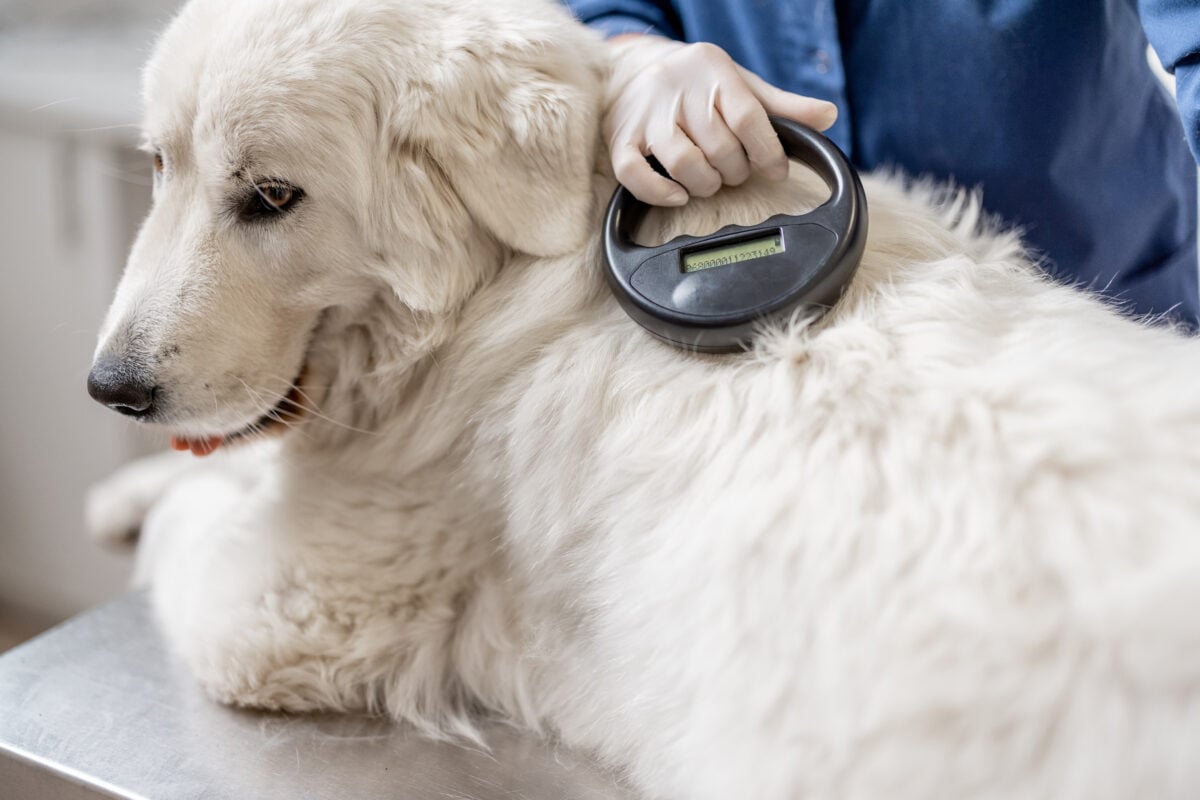
2. Pre-Printed Flyers
Keep a few lost pet flyers already filled out with your pet’s photo and your phone number. This can save valuable minutes if you need to alert neighbors or shelters quickly.
3. Local Contact List
Have the phone numbers of animal control, local shelters, and emergency vet clinics stored in your phone and printed in your kit.
4. Social Media Alerts
Know which Facebook groups, neighborhood apps, or local lost pet pages to post on. These can spread the word in minutes.
5. Temporary ID Bands
Use write-on ID collars or bands if your pet is not wearing their normal tag during the emergency. This makes it easier for rescuers to contact you.
Quick tip: Keep a clear, full-body photo of your pet in your phone and printed in your kit. In stressful situations, small details like markings or collars can help confirm identity.
Pet-Specific ID Solutions
In chaotic situations, clear identification can be the difference between reunion and heartbreak. Make sure your pet can be identified quickly and accurately.

- Microchips: Permanent and scannable by shelters and vets
- GPS collars: Track your pet’s location in real time through an app
- QR code tags: Store medical details, photos, and contact info accessible by anyone with a smartphone
- Temporary ID tags: Write-on collars or bands for fast updates if your address changes during an evacuation
Quick tip: Keep backup ID tags in your kit in case your pet’s regular collar is lost or damaged.
Build Your Pet First Aid Kit in Minutes
You never know when you will need to treat a cut paw, remove a splinter, or keep your pet stable until you reach a vet. A simple first aid kit can make the difference between a quick recovery and a dangerous wait. We share our picks for best dog first-aid kits, as well as additional first aid tips.
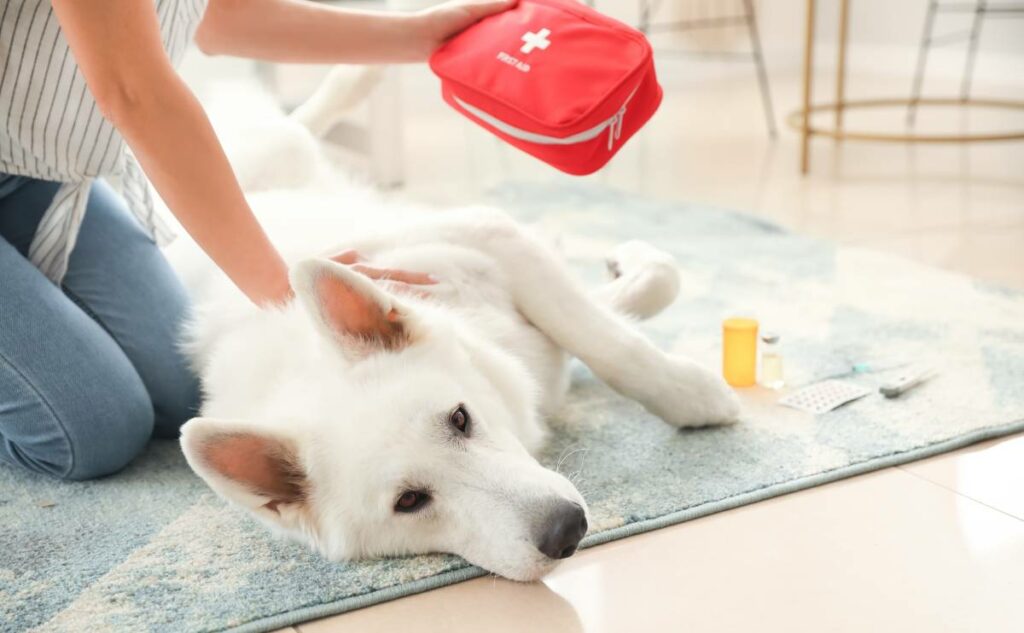
Help Pets In Crisis
When disaster strikes, thousands of pets are left stranded or separated from their families. Many had nothing but the fur on their backs.
Organizations like the ASPCA National Field Response and Red Rover step in to provide food, shelter, and medical care for animals in harm’s way. They rely on donations, volunteers, and foster homes to keep going.
How You Can Help
- Adopt or foster a displaced pet
- Donate food, blankets, or funds to reputable rescue groups
- Volunteer at local shelters after emergencies
- Share lost-pet alerts on social media
Frequently Asked Questions
Even with a solid plan in place, pet owners still have a lot of “what if” questions when it comes to disasters.
Here are quick answers to some of the most common concerns so you can prepare with confidence. Don’t see your question? Ask us in the comments!
What Should Be In A Pet Emergency Kit?
A pet emergency kit should include food, water, medications, vet records, ID, leashes or carriers, waste cleanup supplies, and comfort items like blankets or toys. Pack everything in a waterproof tote or backpack so it is easy to grab and go.
How Much Water Should I Store For My Pet?
Plan for at least one gallon of water per pet per day for a minimum of five days. If you have the space, store extra for cleaning and unexpected delays.
Can I Bring My Pet To An Emergency Shelter?
Some shelters allow pets, but many do not. Identify pet-friendly shelters or hotels in your area ahead of time, and keep their contact information in your emergency kit.
How Can I Keep My Pet Calm During A Disaster?
Create a quiet, enclosed space away from noise and chaos. Offer familiar toys, treats, and your voice for reassurance.
Anxiety vests or calming supplements can also help.
What Is The Best Way To Transport Pets In An Evacuation?
Use a sturdy carrier or crate that is large enough for your pet to stand, turn, and lie down. Secure the carrier in your vehicle and make sure it is labeled with your contact information.
How Do I Protect Exotic Pets Or Small Animals During Emergencies?
Research their specific needs for temperature, food, and containment.
Pillowcases work for small reptiles or rodents in short transports, while portable cages and battery-powered heat lamps may be necessary for others.
What Should I Do If My Pet Gets Lost After A Disaster?
Act quickly by contacting local shelters, posting on lost pet social media groups, and using recent photos for flyers. Microchip registration and GPS collars can greatly improve the chances of being reunited.
Should I Get Pet Insurance For Disaster-Related Injuries?
Yes. Pet insurance can help cover the cost of emergency care, which can be high after accidents or illness during a disaster.
Choose a policy that includes accident coverage and any extra options relevant to your area’s risks.
Pets Are Our Family
When the worst happens, our pets depend on us entirely. The more you prepare now, the less you will have to panic later. Pack the essentials, add a few thoughtful extras, and know your plan before you ever hear a siren.
Start your kit today and encourage other pet owners to do the same. Share this guide with friends, neighbors, and family so no pet is left behind when disaster strikes.
Next up: Learn how pet insurance can save you money in an emergency, or find out how to treat a poisoned dog if the unexpected happens.
